Most brands and marketers will agree that the right influencer collaboration can deliver positive results across important metrics like brand lift and generating clicks. And by now, marketers have a pretty good handle on what goes into running an influencer marketing campaign. This is typically true even if they don’t have the resources to run an effective campaign in-house and/or they don’t know how to structure influencer campaigns to deliver specific results.
Getting specific results that focus on different types of metrics depends on the way an influencer campaign is structured. The Shelf blog has several published posts on the different types of influencer campaigns – how to build Instagram influencer campaigns for clicks vs influencer campaigns for awareness.
Another way to tweak your campaign and the outcomes you get is to switch up the model you use for your influencer collab. But how do companies know which type of influencer collaboration to choose? In this article, we’ll compare six types of influencer collaborations so you can see which would suit your brand the best.
The Do’s and Don’ts of a Successful Influencer Collaboration
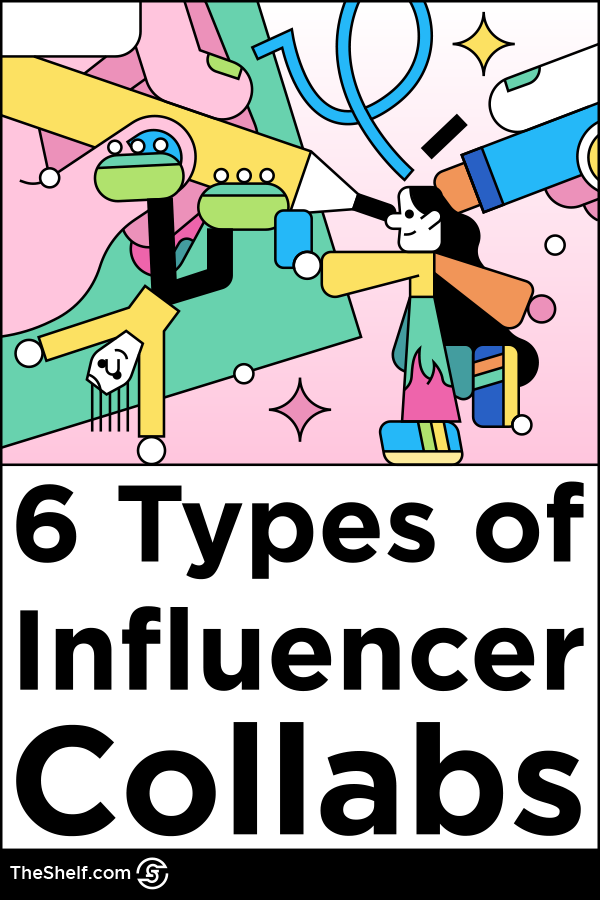
The digital revolution is here. Work, entertainment, and socializing have all shifted online. Social media use is up by over 40 percent since 2019. And by 2021, the influencer market was worth a staggering $13.8 billion. During 2020, 58 percent of social media users noticed an increase in influencer content. So, it’s no surprise businesses are including influencers in their marketing strategies.
In order for an influencer collaboration to work, it needs to feel authentic. Let’s say you’re a B2B marketing firm looking to promote your new course on high-velocity sales. Partnering with a marketing influencer would feel much more authentic than a fashion influencer. So, it’s important to choose influencers who share the interests and values of your target audience.
There are several ways to find influencers for your campaign, and the influencer selection process is critical for the success of your campaign. The nuances of finding the right influencers are important, but whatever way influencers are selected, you want to be able to compare different influencers based on things like:
- The number many followers they have
- How engaged their followers are
- How active they are on the platform and across other platforms
- How their content usually performs and how their followers respond to different types of content
If you’re thinking of collaborating with an influencer, there are a few do’s and don’ts you should bear in mind.
Do…
1. Have clear goals, objectives, and KPIs
Having clearly defined goals for your influencer marketing efforts will shape your campaign. Visibility, traffic, and conversions are top, so before you approach an influencer, you need to know:
- What you want to achieve
- How you want to achieve it
- How you’ll measure success
Most camp
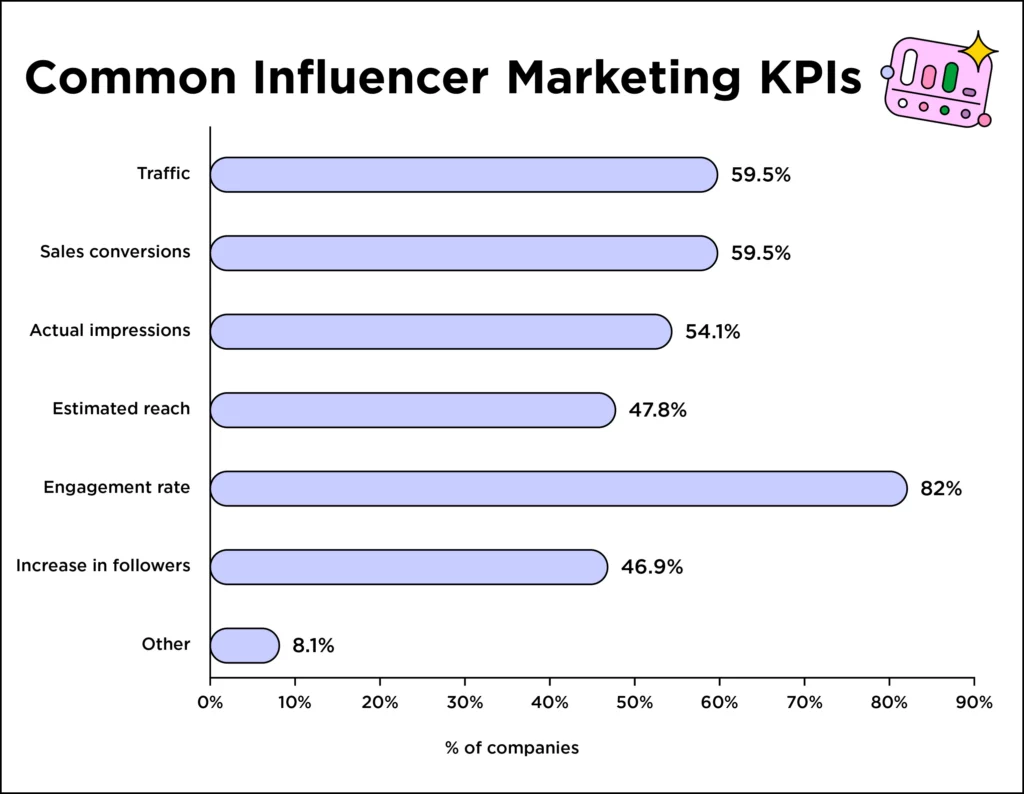
2. Provide an influencer brief
A good influencer brief introduces the influencer to your brand and provides clear guidance on the kind of content you’re looking for. An influencer brief tells the creator what is expected of them. Think: campaign ideas that are similar to what the influencer is already creating, but tailored to your brand and campaign needs.
For example, if you’re running a baby and parenting campaign, and you chose a mommy influencer who is very candid and open about motherhood, it’s smart to have a creative framework developed by your own creative team in which the influencer can craft her own content.
An influence brief gives the creator context for the campaign without trampling all over their creativity.
3. Tailor your approach
When it comes to doing influencer outreach, you can tailor your approach by using the influencer’s first name and referencing their work (which means you have to know their previous work, right?). If you don’t, they’ll know it, and that will put them off working with you. This is also crucial in order to create the best brief possible.
4. Offer fair compensation
Whether you’re offering a fee or free products or services (about a third of brands running influencer campaigns want to pay influencers in freebies), you need to make sure it’s fair and competitive. After all, popular influencers get offers from brands all the time and they decline as many offers as they accept.
Just like any other job/career, influencers have semi-predictable rates that can be compared to industry standards, and most influencers have no problem negotiating for what they’re worth. And let’s face it – at the end of the day, you’re trying to woo them and leverage their talent to help your business, not the other way around.
5. Give the influencer time to prepare
When you approach an influencer, ask them how long they think the project will take. And remember: stellar content takes time to create. So, make sure to reach out with plenty of time, otherwise, their rate will go up for a speedy delivery or they’ll simply turn the offer down due to time constraints..
Don’t…
1. Don’t limit the influencer’s creativity
It’s important to specify the kind of content you’re after, but it’s also important not to limit the influencer’s creativity. The influencer knows their audience, so let them create the kind of content they know works best.
2. Don’t pitch straight away
Before you jump into your pitch, get to know the influencer. Building a connection will make it easier to tailor your approach later. And in the long run, it will make the collaboration smoother.
3. Don’t expect instant results
It can take time for influencer collabs to pay off. It may even take more than one campaign. This is why doing your research and choosing the right influencer is so important. If you do your due diligence,it will pay off in the end.
Types of influencer collabs
Now you know some of the general do’s and don’ts of influencer collaborations, let’s look at some of your options.
1. Sponsored content
Sponsored content includes sponsored social media content and sponsored blog posts. Both can be effective ways of generating interest and driving sales and conversions. In most cases, a business pays the influencer a flat fee.
The pros and cons of sponsored content are:
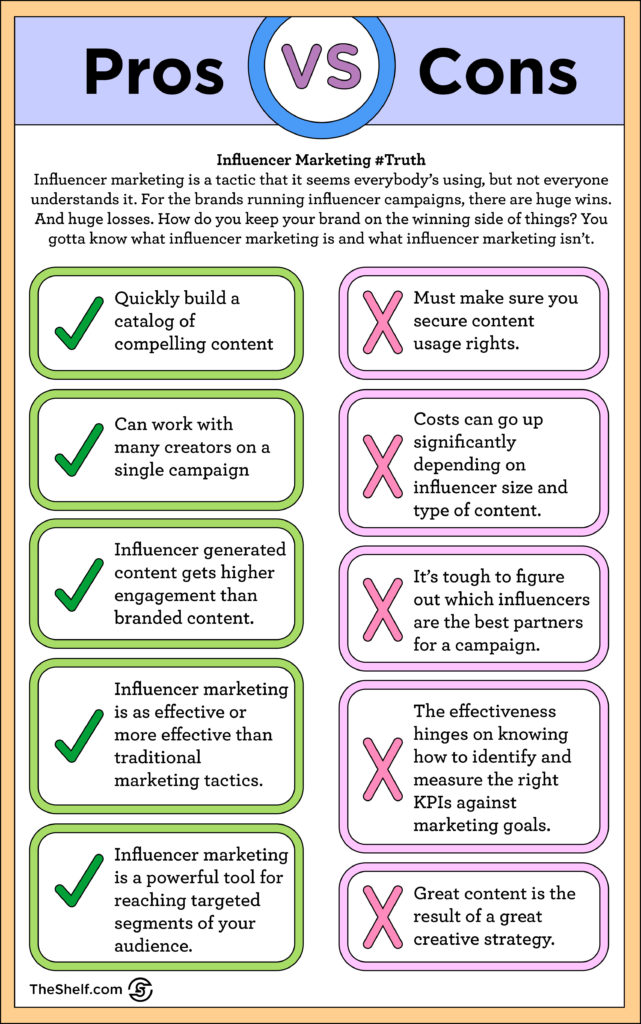
Image Created by Writer
Sponsored social media content
An influencer (or influencers) posting about your brand is a great way to get shoppable content and boost sales. Instagram is the leading social media channel for sponsored content. In fact, 89% of companies say that Instagram is important for influencer marketing.
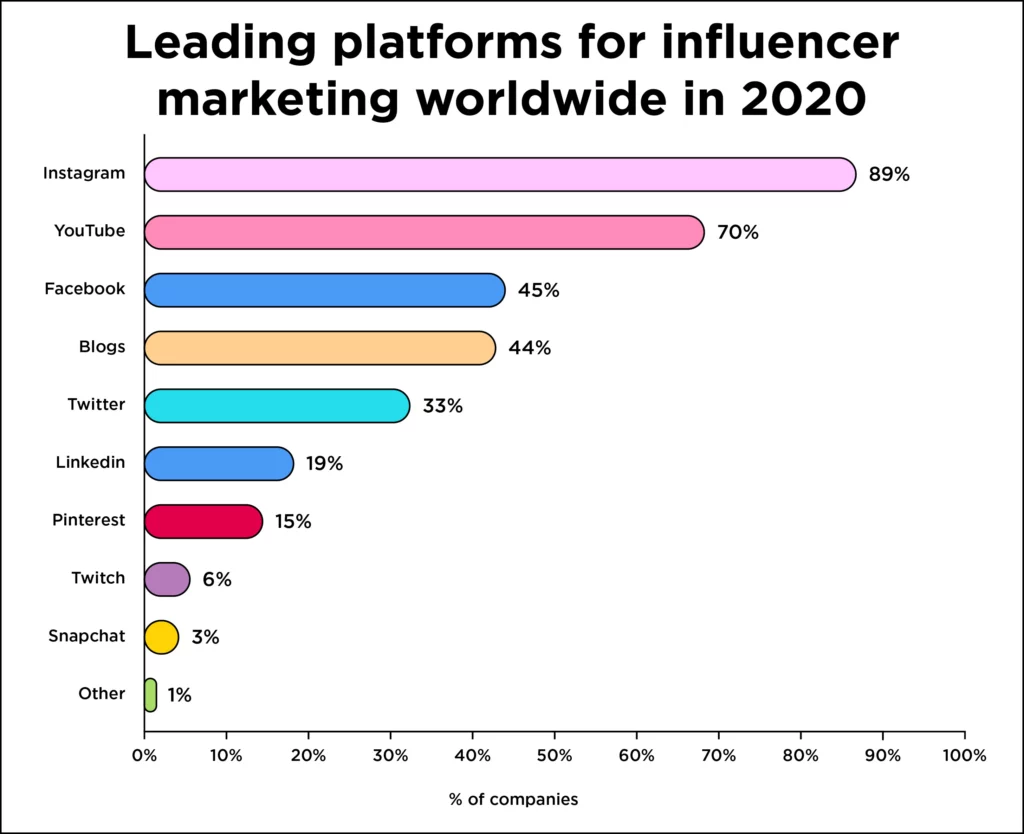
It’s important to specify exactly what you want in your influencer brief. Do you want posts with images or videos? Facebook or Instagram Stories? These are all types of sponsored content.
It’s also important to include guidelines on disclosure. On most channels, #ad, #sponsored, or #promotion is acceptable disclosure, but it’s always good to review the current FTC guidelines regarding sponsored content disclosures.
Sponsored blog posts
In this case, a business pays an influencer to advertise their brand on their blog. Blogs tend to be trusted, so they’re a good option for businesses looking to attract customers. There are two main types of blog posts used in influencer marketing:
- A dedicated post: This is a post on the influencer’s blog dedicated solely to your brand.
- A roundup-style post: This is a post that mentions several businesses. For instance, if you’re promoting your new business app, the influencer could include you in a post about the 10 best business apps.
2. Guest blog posts
Sometimes, influencers let businesses post content on their blog in the form of a guest blog post. In this case, the business creates the content rather than the influencer. It’s a bit like influencer whitelisting, which is when a business posts content on an influencer’s social media channels.
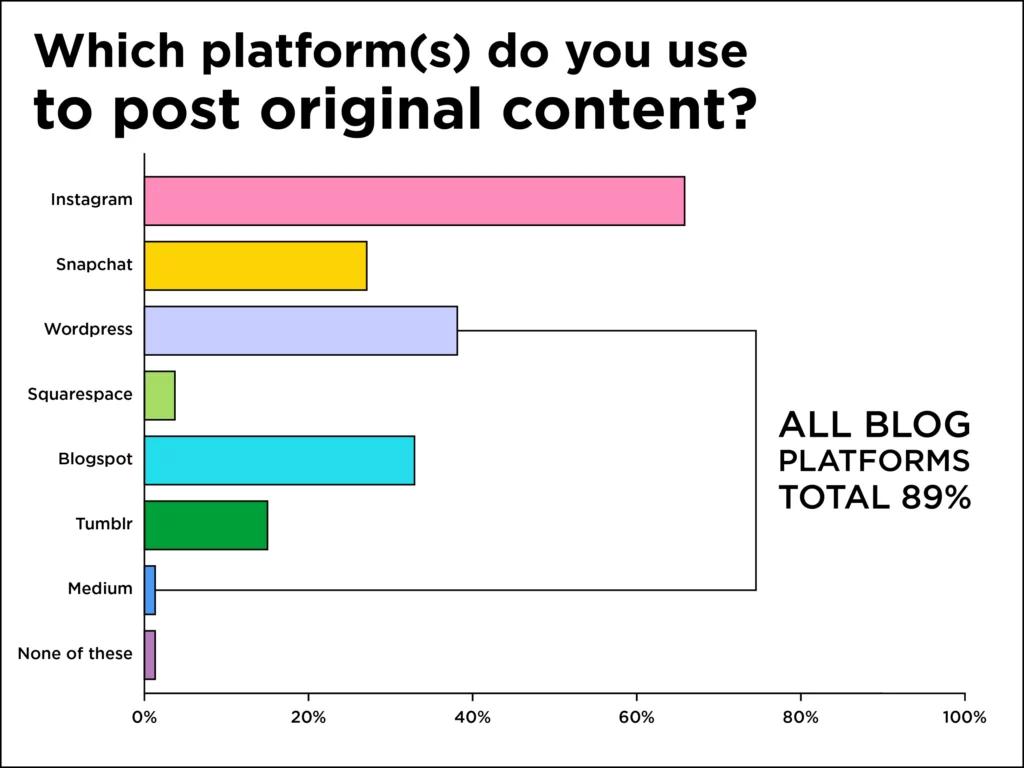
If this sounds like something that would work for your brand, first, you’ll need to check if an influencer allows guest posts. If they do, check their guidelines, and then pitch an idea in line with what they usually write about, but try to avoid sounding too promotional. Remember: the aim of a guest post is to write something informative. And don’t forget to include some links back to your website.
3. Brand ambassador programs
These are also popular, though, they work best when you’ve already developed a relationship with the influencer. Brand ambassadors use and post about your product or service on a long-term basis. They can post content on their own channels or on a branded website with other influencers.
Brand ambassadors may also take part in company events and host giveaways. For example, a brand ambassador promoting video call software could host a giveaway where the winners get five free video calls with the influencer.
They are already loyal customers happy to promote the brand, so it’s an easy way to get brand awareness and even some conversions.
4. Giveaways
Giving influencers free products or services is a great way to boost brand awareness, too. Why? Because influencers can show their followers the great stuff you gave them! Most influencers do this on social media, but some have also taken the next step: buying a domain name. In this case, they can show off your brand on their website too.
Giveaways can generate lots of likes, comments, and shares. But they can backfire. The influencer might not promote you, or they might give you a negative review if they don’t like the product. So if you’re planning a giveaway, it’s best to work with influencers you already know.
5. Takeovers
Takeovers are when an influencer takes over your social media channels for a day, week, or even month to create and post content for you. A takeover may not seem like an obvious way to promote your brand, but it can be surprisingly effective. Takeovers can boost your credibility, increase trust, and excite customers about your brand. An Instagram takeover is particularly popular, but it works on other channels, too.
If you’re planning a takeover, you need to work with an influencer you trust, especially if you’re planning a full takeover. A full takeover is when an influencer has complete access to your account. You can also do a partial takeover, which is when the influencer sends you the content to post.
6. Affiliate Marketing
with Influencer collaborations with brands actually show up in your social media feed in a couple of different ways, one of which is affiliate marketing.
If you’re wondering “what is an affiliate program and how does it work?” – it’s simple. A company partners with an affiliate (such as a blogger or influencer) and pays them a commission. In exchange, the affiliate promotes the company to their audience. The affiliate gets paid, and the company gets customers. Win-win!
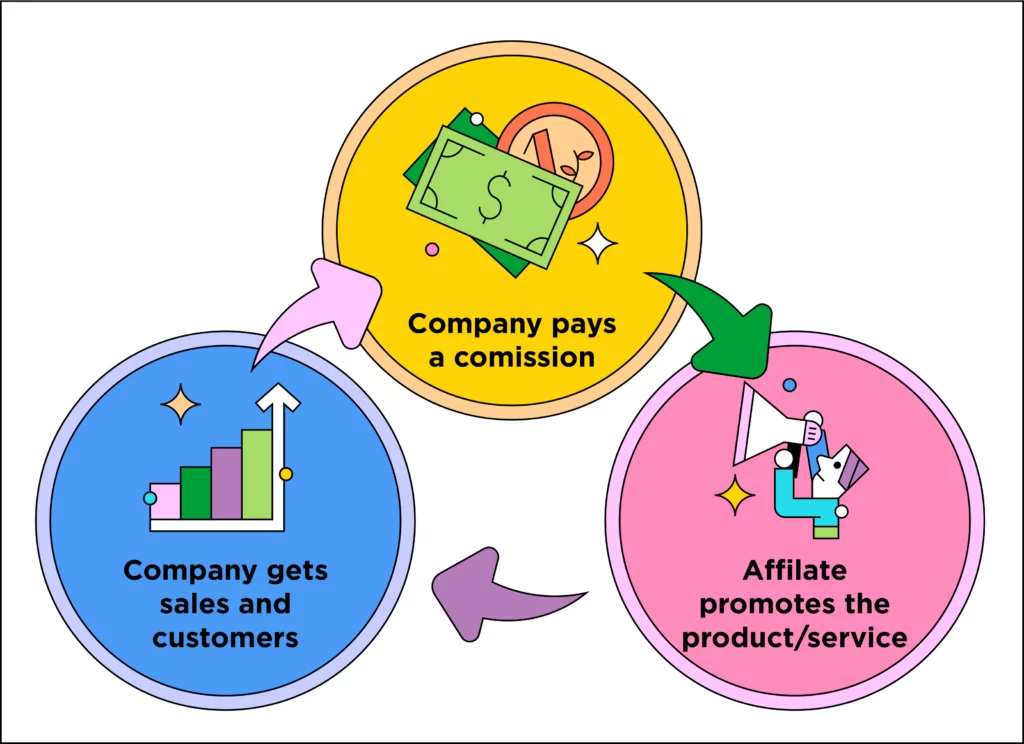
Image Created by Grace Lau, illustrated by Konstantin Smirnov
The Future: AR influencer collabs
The expected growth of augmented reality shopping paves the way for a whole new type of influencer collab. Augmented reality superimposes digital content over real-world environments. AR shopping is becoming more and more popular, especially “try-on” apps that let you try outfits on virtually or see how a new sofa looks in your space.
Try-ons could be a great way for influencers to promote a brand. They could ask followers to vote for their favorite outfit or which table they should buy. The possibilities are endless.
Find what works for you
There are many types of influencer collaborations to choose from. Some – like takeovers and giveaways – work best with influencers you already know. Others work with any influencer. The main thing is to find what works for your brand so you can foster a productive relationship that brings you customers.

About the Author
Grace Lau is the Director of Growth Content at Dialpad
Grace Lau is the Director of Growth Content at Dialpad, an AI-powered cloud communication platform with handy features such as crisp and clear UCaaS solutions and digital voicemail for better and easier team collaboration. She has over 10 years of experience in content writing and strategy. Currently, she is responsible for leading branded and editorial content strategies, partnering with SEO and Ops teams to build and nurture content. Here is her LinkedIn.ere is her LinkedIn.







